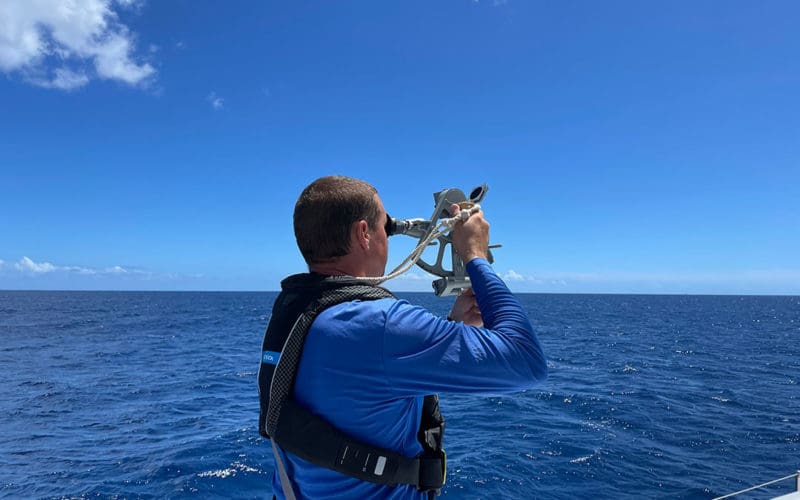
When I was preparing for navigation duties aboard Mikmaks, a 1984 Stevens 47, on the 2021 Transpac Race, celestial navigation was at the top of my mind. A big reason for this was that I had just completed my 200-ton Unlimited Yachtmaster license, and International Yachtmaster Training for that license consists primarily of celestial navigation topics. On the race, I wanted to compete for the Transpac’s Mark Rudiger Celestial Navigation Trophy. I had used a sextant and worked out some sights over the years, but I had never solely relied on celestial before.
So, the month of April found me working with a great friend who is a real whiz at celestial. We refined methods, and I learned the use of some key tables in Bowditch. After three brain-squeezing days of calculations, I left with a more complete understanding of Bowditch, an organized method of recording my work, and a pile of pre-race homework.
The goal was to navigate Mikmaks from Point Fermin to Diamond Head as without GPS, with a clear record of the effort.
Here are some skills I worked on prior to the race:
• How to maintain a dead reckoning (DR) log, using traverse tables
• How to calculate a great circle route manually
• Using the lunar distance method to correct your timepiece at sea
• Taking sights on the moon, sun and stars for fixes and running fixes
• Using various tables (HO229, HO249) to work through the sights for the fix
• Using direct computation to calculate sights
• Using and integrating compass corrections
• Calculating nautical twilight at my DR position
So that the crew didn’t need to rouse me every time they wanted to change course, I calculated the great circle route (not to be confused with a rhumb line) for the race. I entered that great circle route into the chartplotter for crew use. The crew recorded each speed and ship’s compass course change in a notebook, which I used for my calculations. This way they were free to race the boat and adjust course for speed, following as closely as possible to the great circle. The sky was solid overcast for the first half of the race. Whenever the sky cleared enough to take sights, I took them. This was sufficient to correct our position to within two miles of our GPS position consistently and one mile occasionally.
We had three goals onboard Mikmaks: maintain excellent seamanship, make the passage in 14 days or less, and navigate traditionally, with excellence, to the degree that the onboard GPS was unnecessary.
Considering that not a single crew member, including myself, had made this passage before, we are proud to have accomplished our three objectives.
-Jesse Osborn

